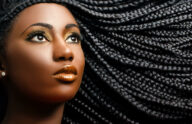Braiding hair is not a crime

Earlier this year, I noted that the Eighth Circuit Court of Appeals endorsed extreme deference to the government when it rejected a challenge by hair braiders in Missouri to the state’s requirement that braiders be licensed as a cosmetologist or barber. In Niang v. Tomblinson, the Supreme Court of the United States has the opportunity to clarify that courts must consider evidence presented in the record that counters the government’s stated rationales in cases challenging economic regulations. We recently filed an amicus brief asking the Court to do just that.
Ndioba Niang and Tameka Stigers are professional African-style hair braiders in Missouri, but are not licensed as cosmetologists or barbers. The Missouri Board of Cosmetology and Barber Examiners requires hair braiders to be licensed as cosmetologists or barbers even though African-style hair braiding is not included in the cosmetology or barbering school curriculum, and the licensing tests barely test on subjects related to the practice. In order to obtain a Missouri cosmetology license, one must pass a background check, undergo substantial training, and pass an exam. Before sitting for the exam, an individual must have: (1) graduated from a licensed cosmetology school with at least 1,500 hours of training; or (2) completed an apprenticeship of at least 3,000 hours; or (3) completed similar training in another state. Alternatively, obtaining a barbering license requires at least 1,000 hours of training at a licensed barber school or completion of an apprenticeship of at least 2,000 hours. Because completing the necessary requirements for a license would force Ms. Niang and Ms. Stigers to incur significant costs for irrelevant training, they sued to vindicate their constitutional right to earn a living free of unreasonable government interference, and are now asking the Supreme Court to take their case.
When the lower courts considered the braiders’ challenge, they essentially ignored the evidence provided by the braiders that showed the licensing requirements were overly burdensome and did not sufficiently relate to the government’s asserted interests in public health and safety. In so doing, the lower courts applied a version of the rational basis test that is no more than a rubber-stamp of approval of government regulation. But that is not the proper application of the rational basis test.
As our brief demonstrates, there is a long line of Supreme Court decisions showing that the rational basis test is a meaningful standard of review. Contrary to the holdings of the lower courts in this case, plaintiffs prevail in rational basis cases when evidence shows that there is not a sufficient logical connection between legislative means and ends. Further, multiple Courts of Appeals and other courts have relied on evidence in the record to invalidate economic regulations under the rational basis test, including cosmetology or barber licensing regulations substantially similar to the laws challenged here.
Hopefully the Court will take up this case brought by our friends at the Institute for Justice and put an end to the confusion and uncertainty caused when lower courts improperly apply the rational basis test. More importantly, the Court’s clarification is needed to protect hair braiders’ and other professionals’ ability to earn a living for themselves without unreasonable interference from the government.



